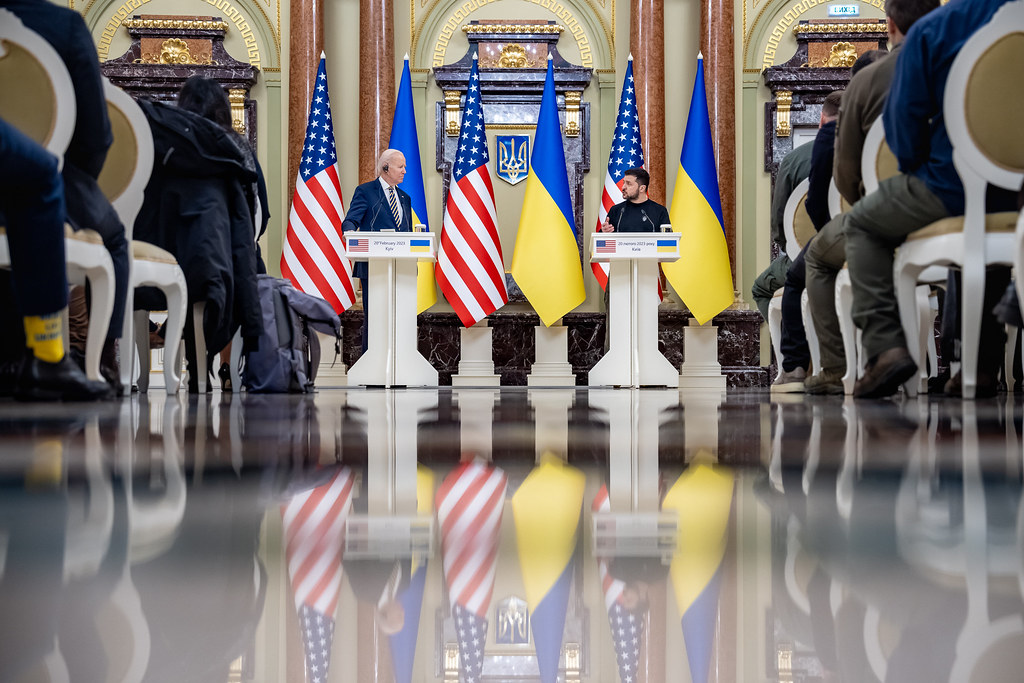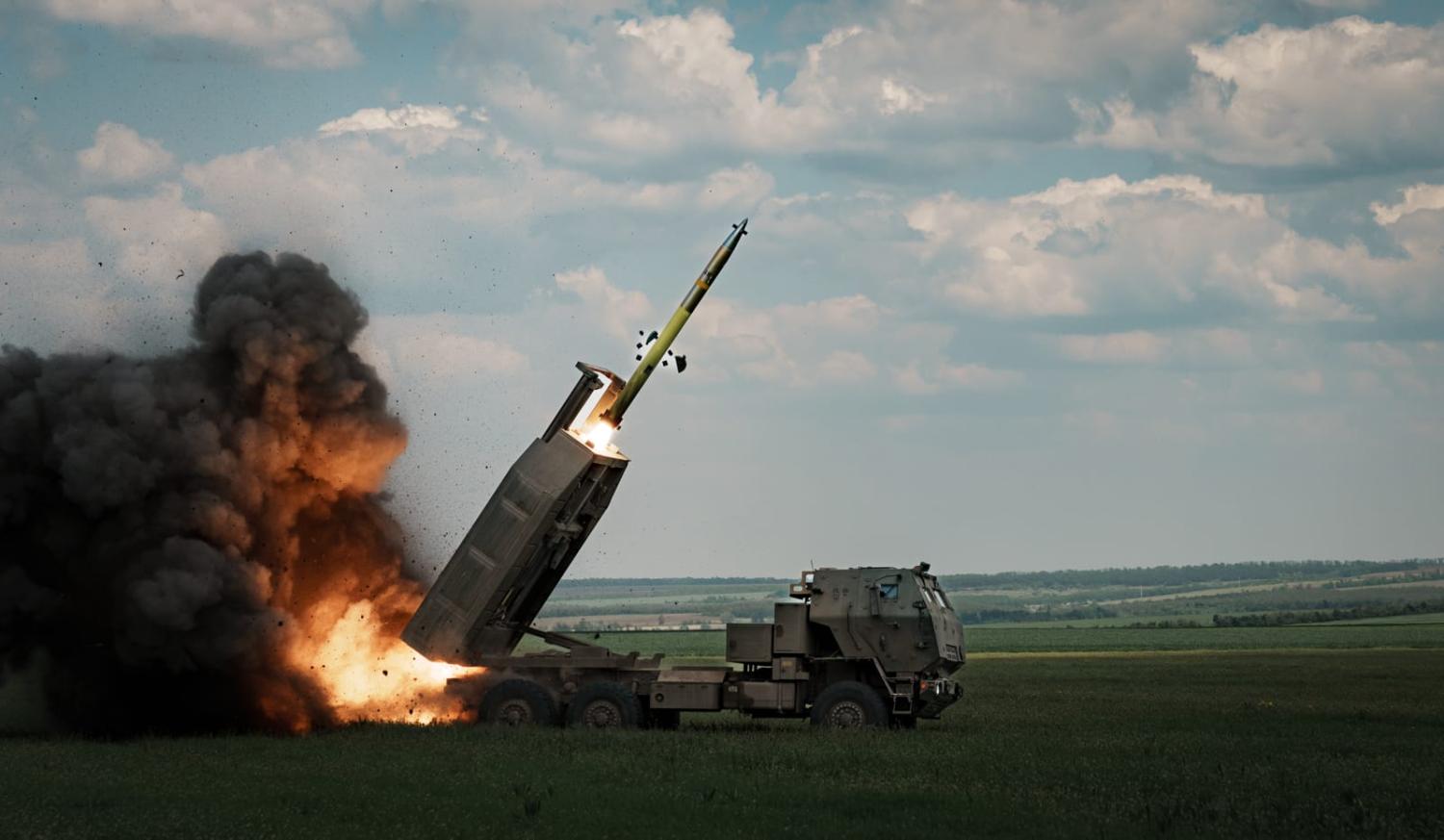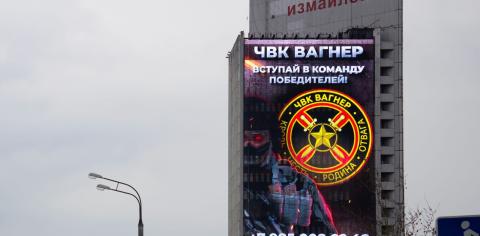In the last two weeks there have been positive developments for Ukraine’s counteroffensive but also worrying signs regarding long-term support from the United States. Successful attacks on Crimea, progress in Zaporizhia, and the potential delivery of US long range missile systems have bolstered the morale of Ukraine and its supporters. But in the US Congress, decisions have the potential to restrict and undermine recent progress.
Last week it was reported that US President Joe Biden had told Ukraine’s President Volodymyr Zelenskyy that the US would provide Army Tactical Missile Systems (ATACMS) missiles to aid the fight to regain territory occupied by Russia. The story was widely picked up but a week later there was still no confirmation from the Biden administration of the story, although, tellingly, no formal denial either.
The ATACMS have a range of around 300 kilometres, around 50 kilometres further than the Storm Shadow/SCALP-EG missiles from the United Kingdom and France currently in use by Ukraine. It’s possible that a formal announcement about the US missiles was delayed, waiting either to be in place in Ukraine or used in the field to maximise damage to Russian forces. The Storm Shadow missiles are already starting to cause havoc in occupied Crimea, with a devastating daytime strike on the Russian Black Sea Fleet Headquarters in Sevastopol that followed an earlier hit on a Ropucha-class amphibious ship and a Kilo-class submarine in a Sevastopol shipyard. These followed reported preparatory strikes on an S-400 battery on the coast of Crimea using Ukraine’s homegrown Neptune cruise missiles after drones first targeted radar infrastructure.
An advantage of the ATACMS over the Storm Shadow missiles, which are launched from fighter jets, is the ability to fire them from High Mobility Artillery Rocket Systems (HIMARS), which the US delivered to Ukraine last year. They can be launched as soon as the coordinates are identified, compared with the lengthy time required for jets to be scrambled and then reaching launch positions. They also travel around Mach 3 – three times the speed of sound – while Storm Shadow missiles travel just under the speed of sound, reinforcing their time sensitive advantage.
The US could probably deliver around 200 ATACMS to Ukraine without undermining its own military preparedness. This would have a material impact on Ukraine’s capabilities, since it is likely already running low of Storm Shadow/SCALP-EG missiles, with the UK and France having only limited spare capacity. A US decision to supply ATACMS may well be the trigger required for Germany to shelve its current opposition to supplying the Swedish-German Taurus KEPD 350 to Ukraine, much as Germany waited for the US to lead the way with supplying main battle tanks earlier this year. The Taurus would be better suited to targeting the Kerch Bridge.

These developments are background to what looks like small, but significant, progress south of Orikhiv in Zaporizhia. The Ukrainian forces started pushing into this area about a month ago and it appears they have breached the triple line of defences west of Verbove, including with heavy vehicles. It’s a dynamic situation but Ukraine continues to widen the salient north of Robotyne and near Verbove.
Further progress consolidating the breach of these lines of defence will be slow but every kilometre they gain south towards Tokmak, Melitopol, Berdyansk and the Sea of Azov puts Russia’s land bridge closer to HIMARS range with the shorter-range Guided Multiple Launch Rocket System (GMLRS) rockets, which Ukraine already uses. Russia uses this land bridge and the Kerch Bridge to supply its forces in Crimea and occupied Kherson. If the land bridge is within HIMARS range and the Kerch Bridge is sufficiently destroyed through Taurus missiles or some combination of other armaments it will likely make Russia’s control of these regions increasingly untenable.
Supplies of ATACMS and potentially Taurus will be necessary to ensure Ukraine’s momentum can be continued over the northern winter and into next summer. Ukraine is likely to be able to fight throughout winter since most of the offensive movement of the last three months has been based on infantry rather than heavy armour and this approach is less dependent on the weather. Unlike last year there may be no real pause in the fighting over this winter.
However, Ukraine’s potential for retaking territory is primarily dependent on ongoing military support from the United States. But pro-Russian elements within the Republican Party have begun to successfully restrict financial support for Ukraine. The US Congress has just passed a stopgap spending bill that will keep the US government operating until mid-November but funding for Ukraine was stripped out by Republicans before the votes. This will have severe implications for Ukraine’s defensive abilities unless a separate spending bill is passed that releases US funding.
The Biden administration’s decision on ATACMS may be partly based on these assessments as well as increasingly perilous polls regarding a Biden-Trump presidential match-up in November 2024. They must know that if they want to end this conflict in Ukraine’s favour they may need to up the ante long before the end of this presidential term.

